Members
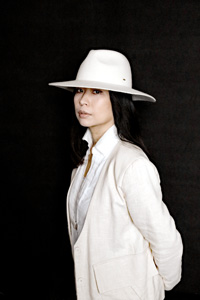
Aki Tomura
FOLK HOOD Founder / Creative Director
www.hamiru-aqui-notion.jp
Aki begun her career as a sumie artist in 1988 performing globally. Aki then switched to become a designer in 2004. As a creative director, Aki provides brand consultation and design direction to her clients. She joined Fermenstation in 2015 being responsible for its brand development and logo design, product naming, catalog and website creation. Aki has been involved with Fermenstation since 2012.
From naming to design, original product development Aki provides a wide range of consulting services from concept creation to packaging and PR.
Other activities include writing and publishing, art director for design events such as “DESIGN TIDE”. Aki has been awarded many creative awards globally.
Favorite fermented foods: katsuo-bushi (fermented bonito) and amazake (fermented rice drink)
http://www.hamiru-aqui-notion.jp/Awards
2001 Grand Prix, LIAA London International Advertising Awards
(Food Package Design Category)
2003 Finalists, LIAA London International Advertising Awards
(Pharmaceuticals Package Design Category)
2005 How magazine design award (logo design Category)
2005 ReBrand design award
2006 Grand Prix, Davey Awards (logo design Category)
2006 Grand Prix, I.D magazine Annual (Concept Category)
2009 SDAJapan Sign Design Association
2018 Grand Prix, Gourmand World Cookbook Awards (Design Category)
Itoki Tomura
Land scape planner / artist
https://www.instagram.com/itoki.t/
Born in 1999,and is the next generation representative. Switched from high school to online education to research the world with the theme of “final design”. She qualified as a permaculture designer at the age of 16. Currently studying land scape design at Kyoto Institute of Art and studying the relationship between animals and plants and people in the 21st century. Also a member of FOLKHOOD.
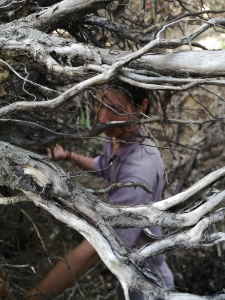
Sora Miyashita
Master Plasterer
While training at a Kaiseki (Japanese fine dining) restaurant in Kyoto, he saw firsthand how Japanese culinary art and capitalism resulted in large amounts of waste. Hoping to help modern society coexist with a zero-waste culture, he started studying permaculture design and organic architecture and found the way of a plasterer.
Fascinated by the beautiful patterns created using organic material such as soil, rocks, and straw, he aspired to become a plasterer.
Currently, he uses traditional plasterwork to build, repair, and promote his work.
He actively promotes Japan’s plasterwork techniques abroad, such as in South Korea, Costa Rica, and San Francisco.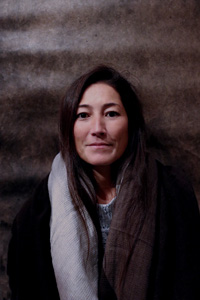
Koto Natsuyagi
Dyer / Designer
https://www.facebook.com/mudwestern/
After graduating from a college in California with a fashion degree, moved to Paris and
studied Haut-Couture, joined in a fashion company.
Through out working in the fashion industry and being exposed to European cultural
fusion, the interest eventually returned back to the Japanese roots, Kimono.
For more deep study one of the finest kimono Oshima Tsumugi, returned to Japan and
moved to Amami Oshima in 2006.
Learning and exploring the beauty of Japanese artisan techniques, at the same time
experiencing the disappearance of the kimono culture and it’s craftsmanship, felt an
imperative duty and hope to carrying on to the next generation the importance to
protect endangered tradition. Which led to create a brand “mudwestern” using
traditional mud dying technique and Oshima Tsumugi under the concept of “DENTŌBI
PROJECT” (DENTŌBI = traditional beauty) .
Continuing activities between Kamakura and Amami Oshima today.

Atsushi Takamisawa
http://www.six-clothing.com
http://www.to-kawa.com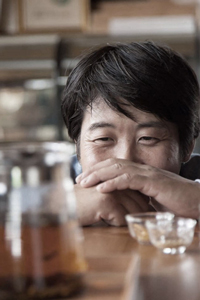
Hiroshi Amano
A certified Minamata environmental master.
A certified Kumamoto Prefecture agricultural producer
Amano Seicha-en
Operating a three-generation tea plantation in Minamata, Kumamoto Prefecture.
This region, which suffered from public pollution in the form of Minamata disease, has explored environmentally-friendly forms of local products that span from local production on through to sale.
Over the course of the plantation’s development, producers there discovered that the local climate imparts a unique flavor and terroir to the tea.
For forty years and spanning two generations, the plantation has pursued ecologically sustainable, organic tea production (free of chemical fertilizers and pesticides). In April of 2019, the plantation welcomed seventy years in operation, and is undertaking a project to develop ecological forest farming using 100+ year-old tea trees by 2030. The project makes use of unutilized tea trees. They also engage in consulting on product development using medicinal herbs for tea. In recent years, the company has also been engaged in collecting natural tea plants inhabiting the mountains.Main tea produced: green tea (steamed green tea/roasted and rolled tea), black tea, Oolong tea, white tea, local tea (kancha, bancha)
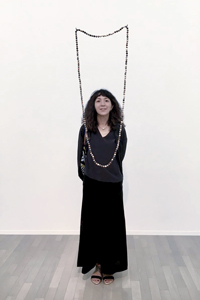
Fumie Tsuji
FLECKFUMIECD: Album
Out Of Order /CD, Album (Beams Records)
Ausland /CD, Album (After Hours)
Starcloud, Moonsky and Ocean /CD, Album (After Hours)book:translation
EKIBEN The Ultimate Japanese Travel Food